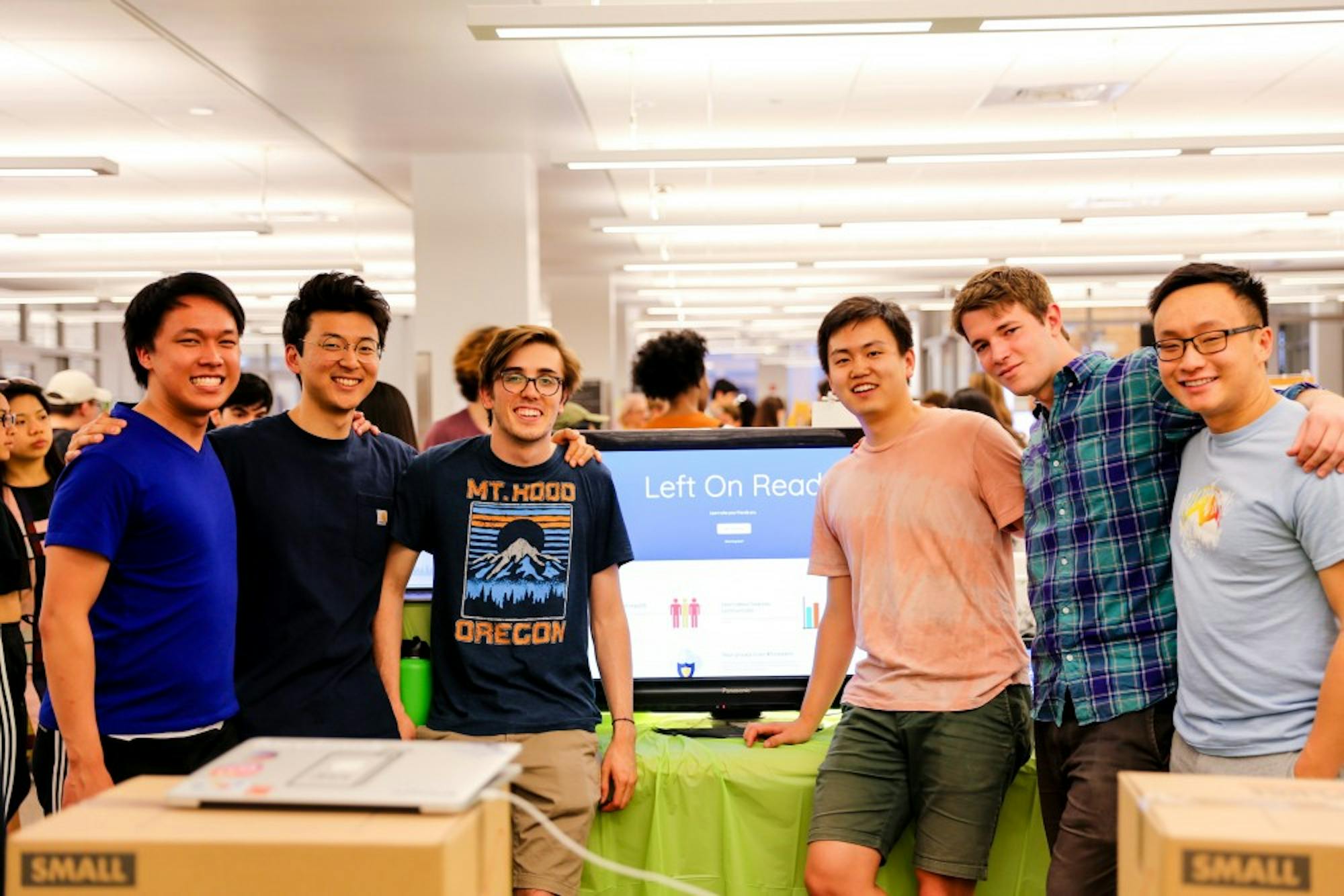Ever wonder how often you’re left on read? Thanks to Left on Read, a new iMessage analysis app developed by a team of Dartmouth students that launched on Monday, you can now find out.
The app, which was originally pitched by Teddy Ni ’19 and Alex Danilowicz ’19 for an assignment in COSC 52, “Full-Stack Web Development,” gives users information on when they text, how they text and who they text, said Justin Luo ’20, a member of the team who developed the app. Users are able to filter their texts by date and specific person, giving them the ability to track their conversation habits over time. The app generates graphs about text messages so users can “feel better” about their relationship with their phone, according to the app’s website.
The inspiration for Left on Read came after Ni and Danilowicz wondered which one of them texted their girlfriends more and set out to create a web service that could provide similar services to anyone interested, Danilowicz said.
After the initial development stages were completed in their computer science class, Ni took the project on as a part of his senior thesis in computer science, and the team has continued building the app since they began working on it last spring.
In addition to Danilowicz and Ni, the Left on Read team is made up of Alex Chan '19, Emma Demers '20, Weiling Huang '19, Thomas Kim '19, Braden Pellowski '18, Justin Luo '20 and Tanya Shah '20.
Ni said that there are no products similar to Left on Read currently on the market that provide a similar level of in-depth analysis of a user’s text messages.
Luo said that Left on Read will fulfill a desire for phone users that they did not even know they had.
“It’s really kind of like doing big data analysis, but it’s not for driving advertisements,” Ni said. “It’s all displayed back to you.”
Computer science professor Tim Tregubov, who is Ni’s thesis advisor and teaches the computer science course the app was originally pitched in, said that right now, large companies utilize all sorts of analytics.
While companies use personal data to learn a great deal about consumers, that information is never accessible to the individual, according to Tregubov.
“This sort of flips that around,” Tregubov said, noting the app’s ability to give users insight into their own text habits and patterns.“You can look at your own text messages and learn something about your relationships.”
The app is able to provide information regarding how many conversations are initiated by each of the participants as well as the balance of messages in term of length and quantity between two people.
However, security and people’s willingness to upload their text messages into the app was a concern from the onset of development, Tregubov said.
“We’ve taken a lot of steps to make sure people are comfortable,” Ni said.
All data entered into the app is completely encrypted to the point that even the app’s developers are not able to access it. Each user has a unique key that they must enter to see their messaging information. Additionally, the app is run through its own personal server in the computer science department, Ni said.
“It is super secure and there is no third party involved in any part of the process,” he added.
Left on Read is a free app website accessible online.
Updated (April 9, 2019): This article has been updated to include the names of all members of the Left on Read team.




